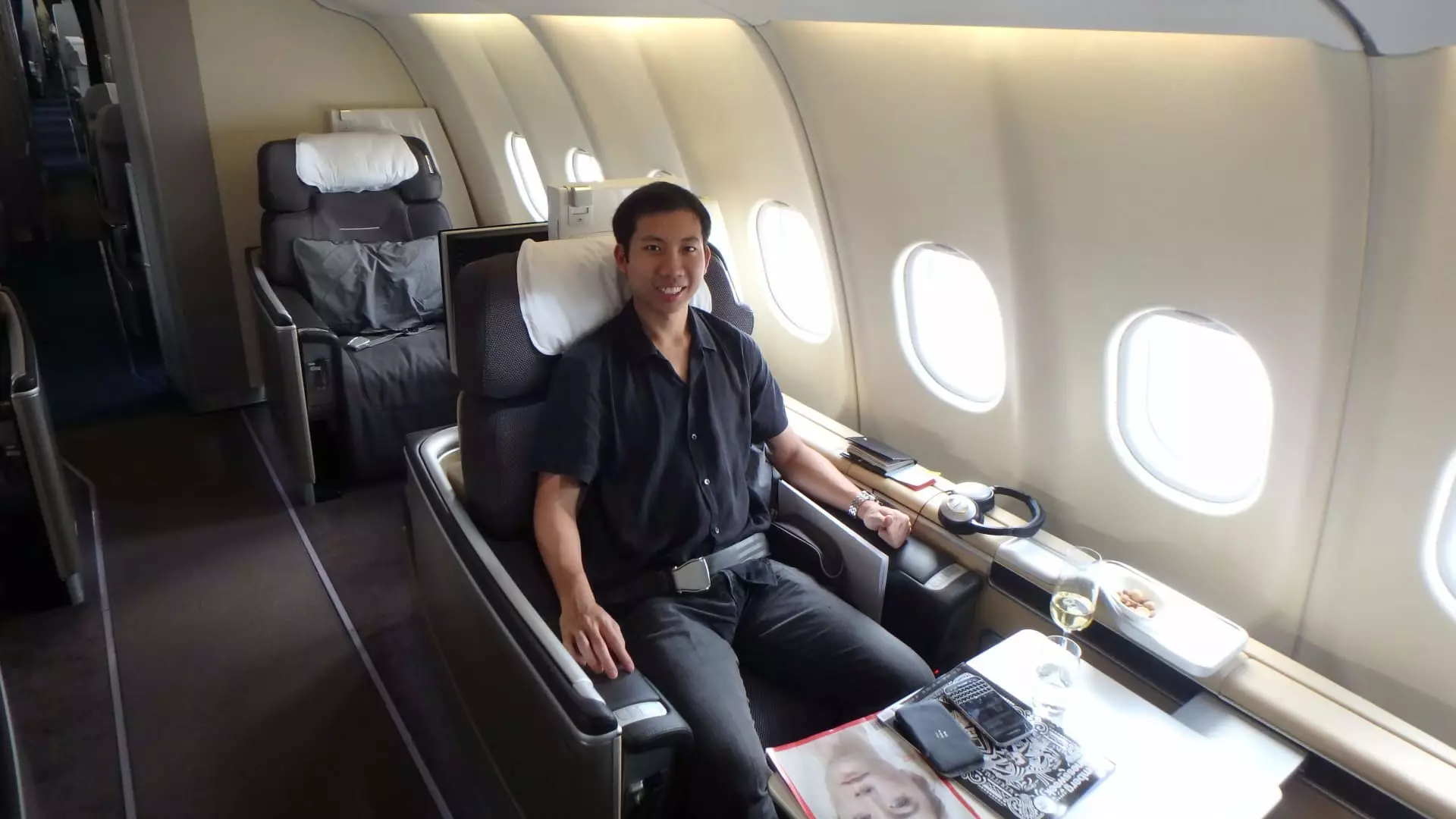For many travelers, the opportunity to fly in business or first class remains a cherished dream, often perceived as a luxury reserved for the affluent or frequent business travelers. The stark price differences between economy and premium tickets can be staggering. For instance, one might find that a round-trip ticket from Singapore to London in economy class can cost about 1,700 Singapore dollars (around $1,304), while business class skyrockets to SG$6,300, and first-class tickets exceed SG$13,000. These sharp contrasts underscore why this level of travel is predominantly associated with corporate executives or wealthy individuals looking to maximize their flying experience.
However, a closer examination reveals that savvy travelers can experience this luxury without necessarily breaking the bank. Transitioning from the conventional perspective of air travel requires understanding how airline loyalty and credit card rewards systems work, allowing travelers to access the benefits of premium flying for a fraction of the usual cost.
Take Singaporean Aaron Wong, for instance, a former management consultant who transitioned to becoming a travel guru through his website The MileLion. Wong exemplifies the concept of a “miles chaser,” flying 8 to 9 times per year in business or first class—with many flights costing little to nothing out of pocket. His strategy centers around diligently accumulating airline miles through targeted credit card spending.
Wong emphasizes the necessity of tailoring credit card selections to individual spending habits. While it may be tempting to select the most popular mile-earning cards, he advocates for a more nuanced approach. Different cards provide bonuses across various categories such as groceries, dining, and online shopping, which can drastically impact the miles accumulated. For instance, using a card that offers 4 miles per dollar spent can lead to significantly increased rewards compared to a more generic card that only provides 1.4 miles.
Navigating the landscape of airline miles can feel daunting, primarily due to the intricate rules surrounding each loyalty program. Wong likens it to having a toolbox where each tool serves a unique purpose. Just as a corkscrew won’t suffice for a beer bottle, relying solely on one type of credit card can hinder the true potential of earning sky-high rewards. Wisely utilizing a combination of cards focusing on earning bonus miles can make a notable difference in travel experiences.
Wong mentions that an expenditure of SG$30,000 on a card earning a modest 1.4 miles per dollar results in approximately 45,000 miles, rewarding the traveler with a round-trip economy ticket to Perth. In contrast, applying that same spending strategy across various cards could net up to 120,000 miles, enough for a promising round trip to Cape Town in business class. This juxtaposition illuminates the power of strategic credit usage in aviation travel.
The complexity doesn’t end at selecting the right cards; travelers must also master the fine print. Understanding the differences in accrual rates, expiration policies, and how points can be pooled among different cards is crucial. For example, in Singapore, points earned from DBS cards may accumulate together, but Citibank points cannot be linked in the same way. Some cards offer automatic conversion to miles upon spending, whereas others provide points that need to be redeemed—creating a maze of logistics for potential mile collectors.
Wong candidly reveals that newcomers can feel overwhelmed by the prospect of needing numerous credit cards to manage their miles effectively. In reality, he advises that for the average traveler, three or four well-selected cards will likely suffice to maximize rewards without unnecessary complication.
Despite navigating through complexities, the rewards associated with strategic miles collection are undeniably appealing. Wong admits he would never willingly pay SG$6,000 to sit in business class; instead, it is the prospect of using accrued miles that transforms the experience from unattainable luxury to feasible reality. His critical point resonates: accumulating points shouldn’t lead to reckless spending.
The world of business and first-class travel is no longer the exclusive domain of the wealthy elite. With the right strategy and understanding of airline loyalty programs and credit card rewards, dedicated travelers can unlock these luxurious experiences without bearing the full financial burden. Embracing this journey requires patience, skillful planning, and a commitment to maximizing every dollar spent, ultimately redefining what it means to travel in style.

